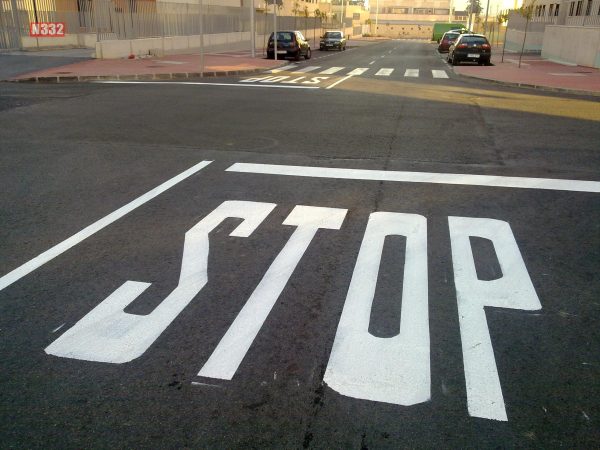As we go about our way on the road network, we are fed a constant supply of information and instructions, designed to keep us safe and advise us about various features on the road and route.
Ordinarily, it is obligatory for road users to adhere to the instructions of traffic lights and road signs located immediately on your right, above the roadway or on top of your lane and, in the case of lanes where traffic can turn left or go straight ahead, those located immediately on your left.
However, sometimes some of the signs and signals can change and be replaced by alternatives, and so it´s important to know the priority in which we must adhere to instructions on the road.
The first priority is always the police, law enforcers and officials directing traffic. If an instruction is given by one of these operatives, it overrules any other sign or signal that you can see. This is sometimes apparent when a police officer might instruct you to cross a junction without stopping, or to stop on a road where it is not normally allowed, for example.

Secondly are road works and diversion signs. To describe them another way, circumstantial signalling that modifies the normal operational status of the road and fixed signals. An example of this is when traffic is directed onto the opposite carriageway or during works where the speed limit is lowered. A temporary speed limit on the road will always take precedence over the normal speed.

Third priority is traffic lights, these must always be adhered to at all times, remembering to stop when instructed, but they can sometimes be overruled by the previous two circumstances.

Vertical traffic signs are the next in our list of priorities, where we have a wide range of different mandatory and advisory instructions and warnings about road characteristics.

Finally, road markings are the next priority on the list, although they too can be indicative of mandatory requirements for drivers and other road users.

Any signals normally apply to the entire width of the road but the application may be limited to one or more lanes defined by longitudinal road markings.
As a final note, if there is ever any confusion over situations where multiple signs or signals are present, the more restrictive type of sign will always take prevalence. For example, on a junction with a Give Way sign on a pole but Stop written on the road, the Stop instruction must be adhered to.
REGLAMENTO CIRCULACION
Prioridad entre señales
Artículo 133 Orden de prioridad
1. El orden de prioridad entre los distintos tipos de señales de circulación es el siguiente:
a) Señales y órdenes de los agentes de circulación.
b) Señalización circunstancial que modifique el régimen normal de utilización de la vía y señales de balizamiento fijo.
c) Semáforos.
d) Señales verticales de circulación.
e) Marcas viales.
2.En el caso de que las prescripciones indicadas por diferentes señales parezcan estar en contradicción entre sí, prevalecerá la prioritaria, según el orden a que se refiere el apartado anterior, o la más restrictiva.




You must be logged in to post a comment.